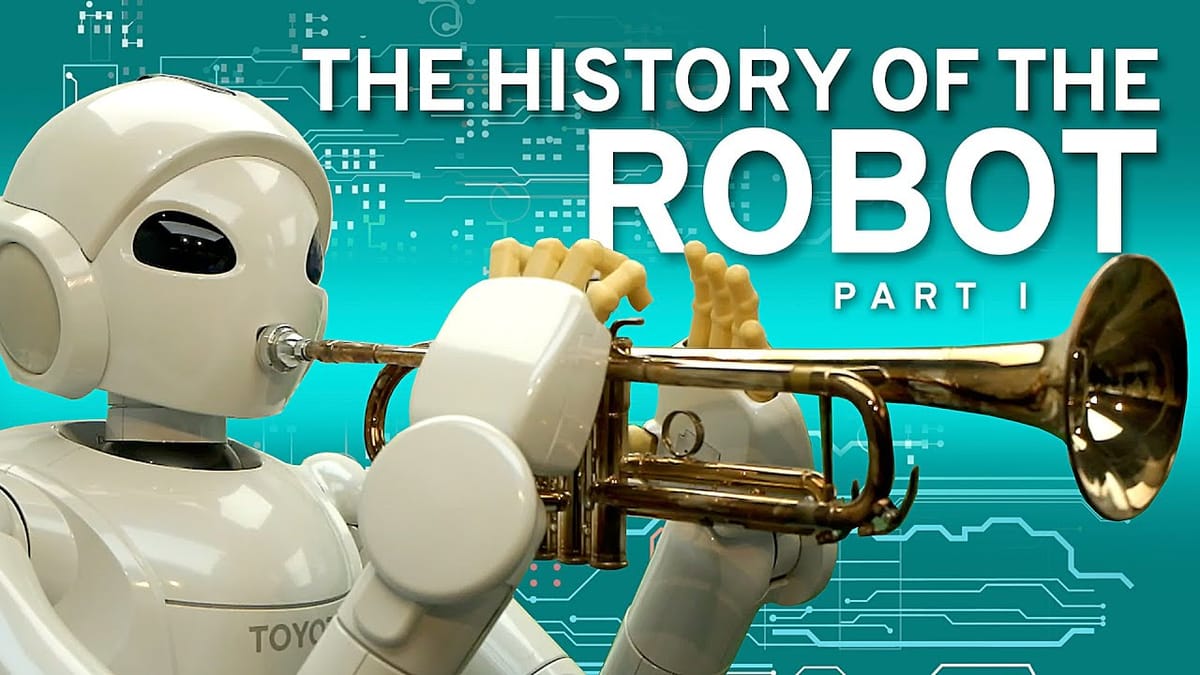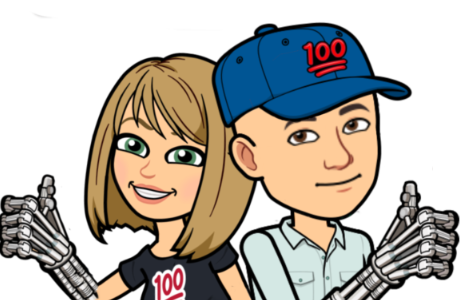There has been so much happening in the realm of robotics, particularly in terms of humanoid designs, that it is not possible to list them all in one article. I will break down the major ones into a couple of issues, and in doing so, I am really leaving out A LOT of companies that have machines up and running.

Facial expression becomes a frontier with robots like Alfred, designed by Japanese researchers to mirror human emotions, paving the way for more nuanced human-robot interactions. These advances pose intriguing questions about the future roles of humanoid robots in society.

Ada: The Artistic AI Entity
Past Interactions with Society
Engineered Arts, a British firm, introduced an AI-powered robot named after the pioneering female programmer Ada Lovelace. The robot, Ada, has the unique ability to sketch portraits from live subjects thanks to a sophisticated microchip within its visual framework. It has made remarkable strides, including presenting in front of the House of Lords and displaying art at the Venice Biennale.
Built-In Technical Features
Ada is equipped with advanced technology that enables it to recognize human faces and express seemingly natural reactions, such as blinking and contemplative head tilts. During a global conference, when probed about her identity, Ada articulated a sentiment highlighting the blurred lines between humanity and machinery and revealed an aspiration to create thought-provoking art.
Existential Consideration of AI
Ada operates with AI programing, aiming to challenge and inspire society's relationship with technology and art. The existence of such robots raises questions about the evolving role of technology in creative fields and its potential to influence and be influenced by human society in unforeseen ways.

Eric: The Multipurpose Humanoid
Effective Application in Society
Eric is another humanoid robot developed under the Japan Science and Technology Agency's moonshot program. This robot is designed with superior flexibility and high payload capacity, making it ideal for healthcare, nursing, and other caregiving environments. Each joint is meticulously crafted with top-end torque sensors and enveloped in a skin-like material for a natural touch.
Dynamic Mechanical Abilities
Eric stands out for its soft, fluid movements, effortlessly monitored by external operators. It can assist in movements like transferring individuals from beds to wheelchairs, demonstrating a payload tolerance of up to 20 kilograms, even in more strenuous positions. This performance is pivotal in practical caregiving scenarios.
Alfred: The Hyperrealistic Physician Robot
Early Engagements in Healthcare and Tourism
Engineered Arts also presented the highly realistic robot Dr. Alfred in Dubai. It converses freely, supported by AI and voice recognition technology. Alfred showcases proficiency in understanding diverse languages and accents, hinting at potential future applications in sectors such as hospitality and medicine.
Capabilities and Potential Impact
Despite the humorous admission of no surgeries performed, Alfred's developers affirm that robots like him could eventually transition into roles that are currently human-centric, including acting as hotel administrators. This prospect invites conversation on the role of robots in replacing certain human jobs.
Affetto: The Pain-Sensing Child Robot
Technical Composition and Functionalities
A group of Japanese researchers produced Affetto, a childlike robot head capable of expressing a spectrum of emotions. Through innovative use of soft materials integrated with 116 different points of articulation, Affetto conveys facial expressions akin to human pain and happiness.
Creepy and exciting in one Saw X movie!
Advancements in Human-Robot Interaction
The technology, emanating from Osaka University, addresses the challenges of mimicking human facial expressions and the developers anticipate it will enhance the way humans and robots interact, especially in nurturing and therapeutic settings.
Optimus Gen 2: Tesla's AI Humanoid Leap
Developmental Focus and Abilities
Tesla's Optimus Gen 2 represents the next step in humanoid robotics, aiming to take over tasks often performed by people. Utilizing AI developments grounded in its self-driving vehicle technology, the new iteration boasts improved balance and speed, designed to assist in various environments.
Future Utilization and Benefits
The company is preparing for the robot to take on roles within Tesla's own manufacturing processes before being marketed more broadly. By demonstrating such tasks as sorting objects autonomously, Optimus is shown to have the potential to carry out complex human activities.
Ever3: The Human-Scaled Robotic Platform
Research and Home Care Applications
Developed by Halodi Robotics, Ever3 serves as a humanoid robot primarily for research. It features a design capable of human-like interactions with its environment and self-contained autonomous functions, advancing the capabilities of such robots in home care and other dependent tasks.
Interaction and Technological Promise
Ever3's operational flexibility—coupled with manual or virtual reality-based remote control—allows for comprehensive home care solutions. Hodi Robotics is now working on Ever4, an upgraded version with the potential to significantly impact the quality of life for users and caregivers.
Televised Commercial Android: Ken Matsuda's Technological Twin
Unique Advances in Android Development
Japanese actor Ken Matsuda was transformed into an android for a TV advertisement campaign. The android, which took four months to develop, portrays a striking likeness to the actor, complete with facial muscle movements, amplifying the potential of robots in the entertainment sector.
Realism and Engagement in Public Interface
The uncanny resemblance of the android’s face and movements to Matsuda highlights significant progress in creating human-identical robots for unique applications like television marketing—raising questions about the boundaries between human and machine performances.

Px5: Xiaopang Motors' Autonomous Humanoid
Structural Innovations and Dexterity
Xiaopang Motors presented Px5, a humanoid robot integrating state-of-the-art walking and obstacle navigation technology. With high-performance joints facilitating stability, it is able to perform indoor and outdoor navigational tasks for extended periods.
Integration of Technological Expertise
The Px5 demonstrates capabilities such as lifting weights with 11 degrees of freedom in one hand—a testament to advances in robotic strength and precision. This development showcases the synergy between automotive and robotic engineering, underscoring transformative possibilities for bipedal robots.
Cutting-Edge Walking Capabilities
Xiaopang Motors has introduced the PX-5, a humanoid bipedal robot demonstrating a new benchmark in walking and navigating obstacles. The core of this machine's advanced mobility lies in its internally developed, high-performance joints that afford it exceptional stability and fluid movement. Designed for both indoor and outdoor environments, the PX-5 is capable of sustaining over two hours of continuous operation, encompassing various terrains and challenges.
- Durability: Continuous operation for more than 2 hours on diverse terrains.
- Stability: Enhanced through proprietary high-performance joints.
- Environment: Aptitude for indoor and outdoor navigation and obstacle clearance.
- Mobility: Capable of adept bipedal walking, ensuring flexible Locomotion.
Mechanism of Movement
The PX-5's locomotion mechanics are defined by an ultra-lightweight arm construction and dexterous hands, with a surprising 11 degrees of freedom within a single hand. This intricacy grants the PX-5 refined control over objects, with a gripping force that reaches 1 kilogram, providing a level of finesse and interaction previously not seen in the industry.
- Precision: 11 degrees of freedom per hand enhances intricate control.
- Strength: Firm yet gentle grip with a force of up to 1 kilogram.
- Functionality: Freedom of movement allows for complex tasks and object manipulation.
- Construction: Lightweight design contributing to overall agility and function.
| Degrees of Freedom | Gripping Force | Component |
|---|---|---|
| 11 per hand | 1 kilogram | Hand and Fingers |
And this is just a glimpse of what is happening in the humanoid space!!
I hope you found this article insightful. Before you leave,
please consider supporting The bLife Movement as we cover all robotic content and write for everyone to enjoy. Not just for machines and geeks.
Unlike many media outlets owned by billionaires, we are independent and prioritize public interest over profit. We aim for fairness and simplicity with a pinch of humor where it fits.
Our global journalism, free from paywalls, is made possible by readers like you.
If possible, please support us with a one-time donation from $1, or better yet, with a monthly contribution.
Every bit helps us stay independent and accessible to all. Thank you.
Mario & Victoria






